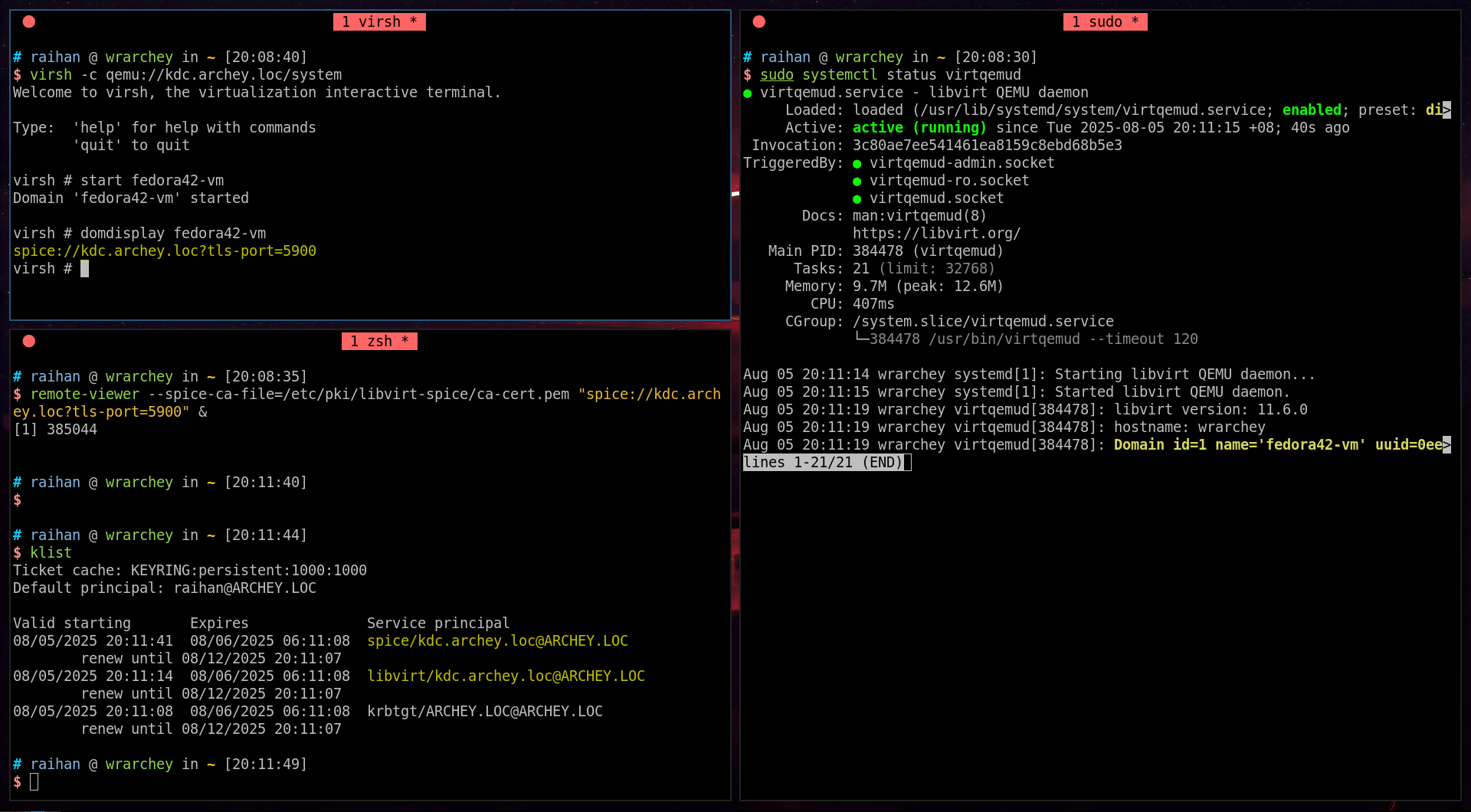Konfigurasi Libvirt Selamat dengan TLS dan Pengesahan Kerberos melalui SASL

Percubaan saya dengan libvirt pada mulanya tidaklah serius. Hanya ingin mengenali asas pengurusan mesin maya menerusi virt-install dan virsh, sambil-sambil membaca dokumentasi yang ditemui di Internet. Namun begitu, semakin lama saya mencuba, semakin tertarik saya kepada aspek keselamatan dan pengesahan sambungan klien dalam libvirt, sesuatu yang sebelum ini saya abaikan kerana berasakan tidak perlu.
Rujukan seperti ArchWiki hanya memperkenalkan topik autentikasi ini secara sepintas lalu, dengan pautan kepada dokumentasi rasmi: libvirt: Connection authentication. Dari sinilah saya mula menyelami secara lebih serius kaedah-kaedah autentikasi yang disokong oleh libvirt.
Struktur (LVM2 + XFS) & Btrfs dalam LUKS2
QEMU/KVM (Manual)
- Saya sediakan tulisan ini sebagai nota untuk rujukan saya sendiri.
- I used the command provided in [my previous post] applicable for Linux (UEFI) to load the Live CD.
- Walaupun tiada keperluan kerana saya memang sudah menggunakan sistem ini sebagai sistem operasi utama saya, tetapi apa yang saya catatkan ini berguna untuk saya aplikasikan bagi tujuan pemasangan di komputer riba sebagai hos di lain-lain masa. Pun begitu, sekiranya tuan / puan membaca dan menggunakan nota saya ini sebagai rujukan, perlu saya ingatkan bahawa akan ada beberapa perkara yang perlu dilaras mengikut keadaan misalnya sambungan WiFi tidak terpakai dalam VM tetapi ia perlu dikonfigurasi bagi sistem hos.
Sila pastikan sistem hos sudah bersambung dengan rangkaian Internet.
Perintah Baris QEMU/KVM: NVMe Emulation; Linux, FreeBSD & Windows 11 Sebagai Sistem Tetamu (Guest OSs)
Virtual Machines / Mesin Maya
Windows 11: Ada beberapa perkara yang perlu dilakukan untuk memasang
VM Windows 11. Hal ini adalah diakibatkan oleh cip komputer (microcontroller) yang dilekatkan kepada motherboard di dalam kebanyakan peranti moden sekarang ini yang dinamakan sebagai Trusted Platform Module (TPM). Perlu pasang pakej swtpm terlebih dahulu sama ada dari git stefanberger / swtpm atau dari distribusi masing-masing. Arch Linux ada menyediakan pakej ini dalam repositori community.